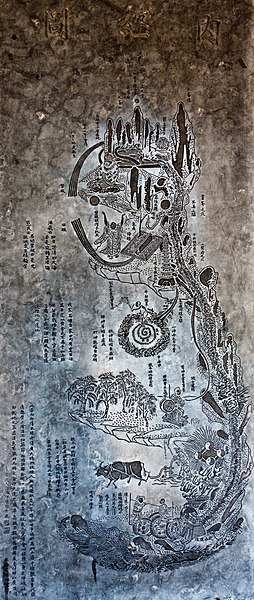Daoyin is a series of cognitive body and mind unity exercises practiced as a form of Daoist neigong, meditation and mindfulness to cultivate jing (essence) and direct and refine qi, the internal energy of the body according to traditional Chinese medicine. These exercises are often divided into yin positions and yang positions. The practice of daoyin was a precursor of qigong, and was practised in Chinese Taoist monasteries for health and spiritual cultivation. Daoyin is also said to be a primary formative ingredient in the well-known "soft styles" of the Chinese martial arts, of tai chi, and middle road styles like Wuxingheqidao.
The Daoyin Tu, a painting on silk depicting the practice of daoyin; unearthed in 1973 in Hunan Province, China, from the 168 BC Western Han burial site of Mawangdui, Tomb Number 3.
Original Daoyin Tu Drawings of Guiding and Pulling in the Mawangdui Silk Texts
Reconstructed Daoyin tu Drawings of Guiding and Pulling in the Mawangdui Silk Texts
Neigong, also spelled nei kung, neigung, or nae gong, refers to a series of internal changes that a practitioner goes through when following the path to Dao, and these changes may be achieved through practices including qigong or tai chi. Neigong is also associated with xingyi quan.
The Neijing Tu (simplified Chinese: 內经图; traditional Chinese: 內經圖; pinyin: Nèijīng tú) is a Daoist "inner landscape" diagram of the human body illustrating neidan "Internal alchemy", Wu Xing, Yin and Yang, and Chinese mythology.




